Gallbladder Treatments
What are Gallbladder Treatment Options?
The treatment options for gallbladder issues can vary depending on the specific condition and its severity. Here are some common gallbladder treatments:
Conservative Management
It involves lifestyle changes and dietary adjustments to manage gallbladder issues. This approach may include
- Adopting a low-fat diet: Reducing the intake of fatty foods can ease the workload on the gallbladder and reduce symptoms.
- Increasing fibre intake: Consuming more fibre can help regulate digestion and prevent gallstone formation.
- Managing weight: Maintaining a healthy weight can reduce the risk of gallbladder problems.
Medications
Certain medications, such as pain relievers, antibiotics, anti-inflammatory drugs, and ursodeoxycholic acid (UDCA), may be prescribed to manage gallbladder conditions and alleviate symptoms.
- Pain relievers: Over-the-counter pain medications like acetaminophen may help manage mild gallbladder pain.
- Ursodeoxycholic acid (UDCA): This medication can sometimes dissolve certain types of gallstones.
- Antibiotics: Used to treat gallbladder infections (cholecystitis).
- Anti-inflammatory drugs: May be prescribed to reduce inflammation in the gallbladder.
Gallstone Removal
Gallstone removal procedures aim to eliminate gallstones from the gallbladder or bile ducts. These procedures can be endoscopic, like Endoscopic Retrograde Cholangiopancreatography (ERCP).
- ERCP is a procedure that combines endoscopy and fluoroscopy to diagnose and treat problems in the bile ducts and pancreas. It is commonly used to remove gallstones that have migrated from the gallbladder into the bile ducts.
Cholecystectomy
Cholecystectomy is the surgical removal of the gallbladder. It is the most common treatment for gallstones and gallbladder disease. The procedure can be performed laparoscopically (minimally invasive) or through open surgery.
Endoscopic Procedures
Endoscopic procedures involve using an endoscope, a thin, flexible tube with a camera, to diagnose and treat gallbladder and bile duct issues. Examples include ERCP and Endoscopic Sphincterotomy.
Biliary Stenting
Biliary stenting is the placement of a stent, a tiny tube, into the bile duct to keep it open and facilitate bile flow. It is used to treat obstructions or strictures in the bile ducts.
Percutaneous Transhepatic Cholangiography (PTC)
PTC is a procedure in which a needle is inserted through the skin and into the liver to inject a contrast dye into the bile ducts. It helps visualise and diagnose blockages or abnormalities in the bile ducts.
Liver Transplantation
Liver transplantation is considered in severe cases of end-stage liver disease, where gallbladder issues are associated with liver dysfunction. It involves replacing a diseased liver with a healthy liver from a deceased or living donor.
Non-surgical treatments are typically considered for milder cases or for patients who are not suitable candidates for surgery. Surgical options, such as cholecystectomy, may be recommended for severe gallbladder disease, recurring gallstones, or complications like gallbladder inflammation or cancer.
It is crucial to consult your doctor to determine the most appropriate treatment plan based on the specific gallbladder condition and individual health circumstances.
Advanced Gallbladder Treatments
Advanced gallbladder treatment refers to medical interventions and procedures beyond the standard approaches for common gallbladder conditions. These advanced treatments are often employed when traditional methods are ineffective, or the patient's condition is more complex or severe.
Some examples of advanced gallbladder treatment include:
- Laparoscopic Cholecystectomy is a minimally invasive surgical procedure to remove the gallbladder using small incisions and a laparoscope (a thin, flexible tube with a camera). It is considered a standard treatment for gallstones and other gallbladder-related issues and is associated with faster recovery than open surgery.
- Robotic-Assisted Cholecystectomy: This procedure is similar to laparoscopic cholecystectomy but employs robotic technology to assist the surgeon. Robotic systems offer enhanced precision and dexterity, allowing for more complex surgeries or when the anatomy is challenging.
- Percutaneous Cholecystostomy: A percutaneous cholecystostomy may be performed in cases of acute cholecystitis where surgery is deemed too risky due to the patient's health condition. This involves inserting a catheter into the gallbladder to drain accumulated fluid and relieve inflammation.
- Oral Dissolution Therapy: This treatment involves using medications to dissolve certain gallstones. It is typically reserved for patients unsuitable for surgery or prefer a non-invasive approach.
- Intraoperative Cholangiography (IOC): IOC visualises the bile ducts using contrast dye and X-rays during gallbladder surgery. It helps the surgeon identify any additional stones or anatomical variations requiring attention.
Who is Suitable for Gallbladder Treatments?
The suitability for gallbladder treatments depends on the specific gallbladder condition, its severity, and the patient's overall health. In general, individuals who experience the following may be considered suitable candidates for gallbladder treatments:
- Gallbladder Symptoms: Individuals experiencing symptoms like abdominal pain, nausea, vomiting, or digestive disturbances likely related to gallbladder issues may be candidates for treatment.
- Gallstones: Patients with gallstones causing symptoms, such as pain or complications like obstructive jaundice or cholecystitis, may require treatment.
- Gallbladder Inflammation: Those diagnosed with acute or chronic cholecystitis (gallbladder inflammation) may need treatment to alleviate symptoms and prevent complications.
- Gallbladder Polyps: If gallbladder polyps are large or growing, or there is concern about malignancy, treatment may be necessary.
- Biliary Tract Obstruction: Individuals with biliary obstruction due to gallstones or other causes may require intervention to relieve the obstruction.
- Gallbladder Cancer: Although relatively rare, gallbladder cancer may require surgery, chemotherapy, or radiation therapy.
- Gallbladder Dyskinesia: In cases of gallbladder dyskinesia, where the gallbladder doesn't contract and empty correctly, treatment may be required to improve gallbladder function.
Not all gallbladder issues require immediate treatment, and conservative management with lifestyle changes and medications may suffice for certain conditions. The final decision on the most suitable treatment approach should be made after a comprehensive evaluation by a doctor.
Benefits of Gallbladder Treatments
The benefits of gallbladder treatments depend on the specific condition and the chosen treatment approach. Some potential benefits include
- Symptom Relief: Treatments can alleviate symptoms such as abdominal pain, nausea, and digestive disturbances associated with gallbladder issues.
- Improved Quality of Life: Successful treatment can improve the overall quality of life, allowing individuals to resume normal activities without discomfort.
- Prevention of Complications: Timely treatment can prevent the progression of gallbladder problems and reduce the risk of complications like infection, inflammation, or obstruction.
- Resolution of Gallstones: Treatments can eliminate gallstones or dissolve them, reducing the risk of recurrent gallstone-related issues.
- Preservation of Gallbladder Function: In some cases, non-surgical treatments may preserve gallbladder function and avoid surgical removal.
- Reduced Risk of Gallbladder Cancer: Treatment for certain gallbladder conditions can lower the risk of developing gallbladder cancer or detect it at an early, more treatable stage.
- Improved Digestion: Effective treatment can improve bile flow and digestion, leading to better nutrient absorption and digestion.
- Preventive Measures: Treating gallbladder issues can lead to adopting preventive measures, such as lifestyle changes and dietary adjustments, to maintain gallbladder health in the long term.
Discussing the potential benefits, risks, and expected outcomes of the chosen treatment with a healthcare professional to make an informed decision that aligns with the patient's needs and preferences is essential.






